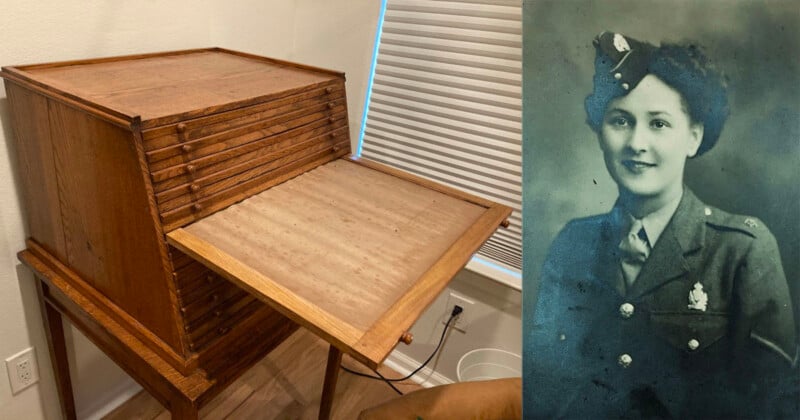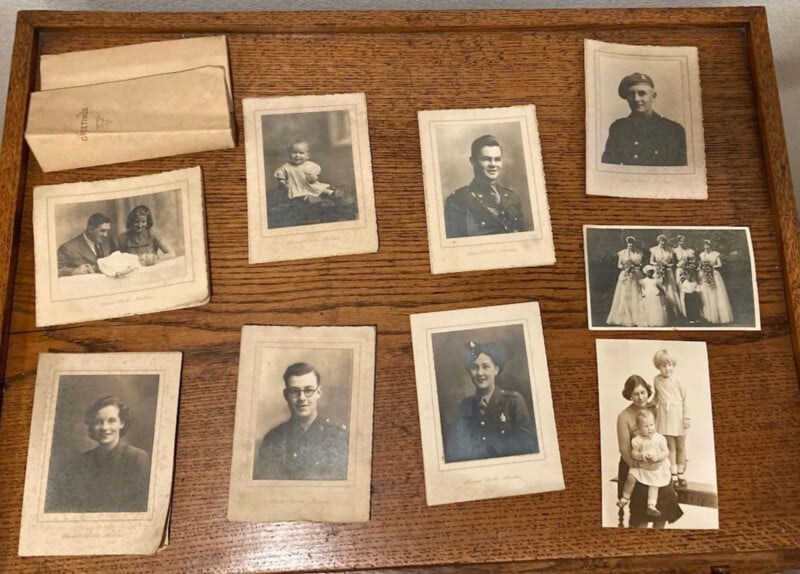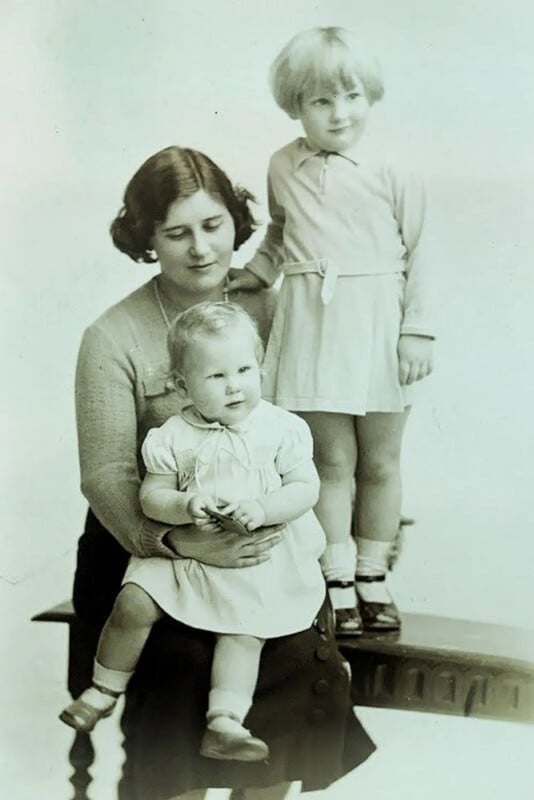Texas Man Buys Bureau and Discovers World War One Photos Taken in England Hidden Inside

A man in Austin, Texas bought a bureau only to discover a set of historic World War One photos hidden in it taken 5,000 miles away in the United Kingdom.
Brad Knox and his wife Anni found the fascinating photos after realizing a small crack in the desk had allowed a stash of documents to fall below the drawers.
“It turned out to be a series of photographs, all seemingly by the same person,” Professor Knox tells the BBC. “Almost all of them have, at the bottom, the insignia Leonard Chettle – Nuneaton.”


Nuneaton is a town in England 5,000 miles away from Austin but thanks to the power of the internet, Knox was able to get hold of the Nuneaton Local History Group. Knox posted some of the photos and the Facebook group was able to identify some of the people in the photos with a few even spotting themselves.
“A lot of people were interested in a piece of history being unearthed, across the world,” Knox tells the BBC.
“My theory is that this furniture was used by Leonard Chettle to hold photographs that were awaiting pick up.”
![]()
![]()
How the bureau from England ended up in Texas is a total mystery but Knox has enjoyed the enigma nevertheless.
“It has been fun to find out more about this antique’s history and to hear from some of the people who are in the photographs has been a really pleasant surprise,” adds Knox. “I’ve also been fascinated to learn about the town.”
Photo Business in 1912
The photographer Leonard Chettle set up a studio in Nuneaton in 1912 — two years before the outbreak of World War One. He found himself photographing wounded soldiers returning from the front line, according to the history group’s administrator Peter Lee.
But Chettle’s business was initially short-lived because he was conscripted into the Royal Flying Corps (RFC) to be a reconnaissance photographer.
“It must have been a dangerous job as RFC flyers did not last long before they were shot down, but he survived and entered into the Royal Air Force in August 1918,” adds Lee.

But after he was discharged, Chettle returned to his Nuneaton studio and advertised himself as a portrait photographer.
“I am particularly fond of Leonard Chettle’s work because there seems to be an ethereal clarity to the images, almost capturing the spirit of the sitters in his studio, in a way that some local photographers do not quite achieve,” said Mr Lee.
Chettle carried on until retirement in the 1950s with local historian David Fry telling the BBC that “very few photographers go on for a matter of 40 years.”
Image credits: Leonard Chettle and Brad Knox.